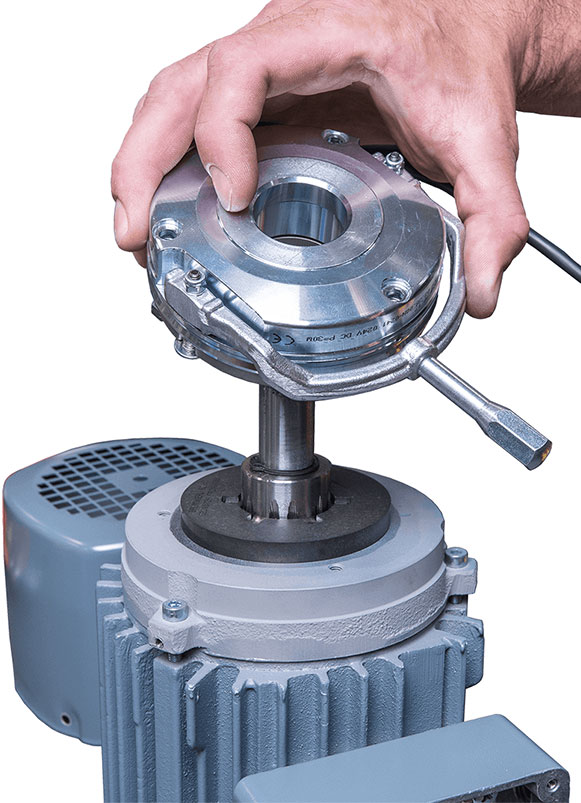Over excitation and other important terms related to voltage in KEB brakes
When you call KEB America to discuss any of our brake products, our sales engineers will walk you through the important specifications of each product so you can choose the right brake for your application. Since our entire line of brakes and clutches have an electric coil, knowing the voltage nomenclature is important.
Here is a short post explaining the important terms, like over excitation, relating specifically to our Spring Applied Brake. Watch the below video for an animation how they work:
Nominal Voltage
Nominal voltage is the rated voltage of the brake. When the voltage is applied with the recommended air-gap the brake will release. The rated power values are based on the nominal voltage. The brake’s current can be calculated using Ohm’s law (Current = Power/Voltage).

Engagement Voltage:
When the supply voltage decreases, the magnetic field generated by the coil weakens which eventually enables the spring force to overcome it making the brake engage. This voltage threshold (recommended to be 0 VDC) is referred to as the engagement voltage.
Disengagement Voltage:
This is the voltage threshold at which the magnetic field overcomes the spring force and the armature pulls in. This voltage threshold (recommended to supply the nominal voltage) is going to be below the nominal voltage rating.
Holding Voltage:
Once the brake has opened and the armature is pulled in, it can be held in that state with reduced voltage (magnetic force). Using a reduced holding voltage is often desirable for lower power consumption, cooler brake operation, or quicker brake disengagement times. After brake disengagement, we would recommend 50% of nominal voltage be supplied to the magnet to securely keep it disengaged.
Over Excitation:
If there is a desire for quicker brake disengagement, then the coil can be “over-excited” which means applying a voltage higher than the nominal rating which builds the magnetic field faster. We recommend supplying the brake with 200% of nominal voltage to initially disengage the brake. The voltage then needs to be decreased to the nominal or holding voltage. Note that this type of operation will increase brake heating so the duty cycle should be verified.

Note: Brake actuation is typically achieved at 100% and 0% nominal voltage. Over-excitation and holding voltage can only be achieved with analog voltage control. If this is not possible with your current voltage controller, KEB can supply a UL Powerbox solution. Actual values will vary between applications due to factors such as brake size, current, or airgap.
KEB – Brake Technology
Do you have questions on what brake is right for your application or how to use it properly – If so, contact a KEB America Engineer or fill out the form below.
Let's Work Together
Connect with us today to learn more about our industrial automation solutions—and how to commission them for your application.






